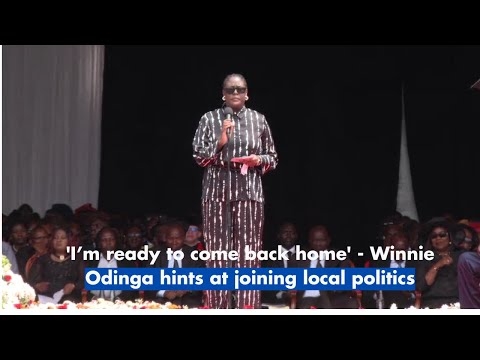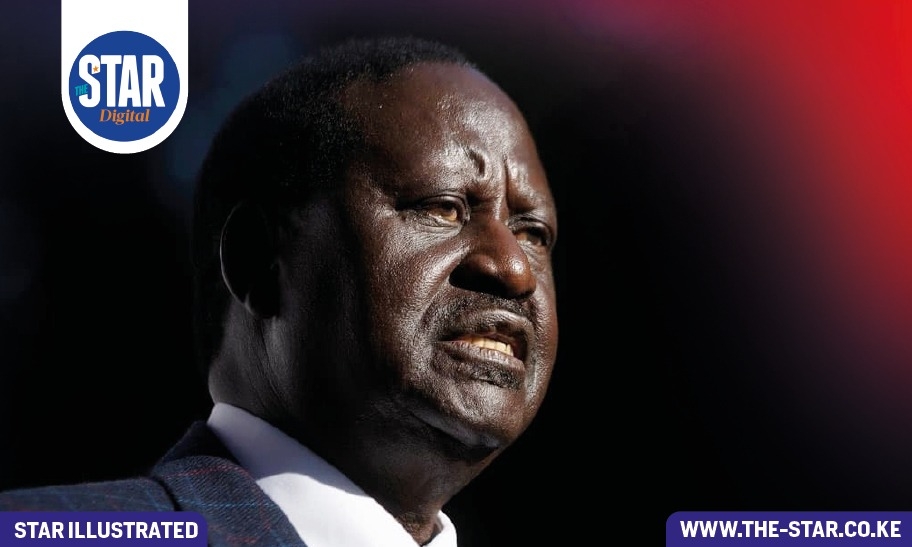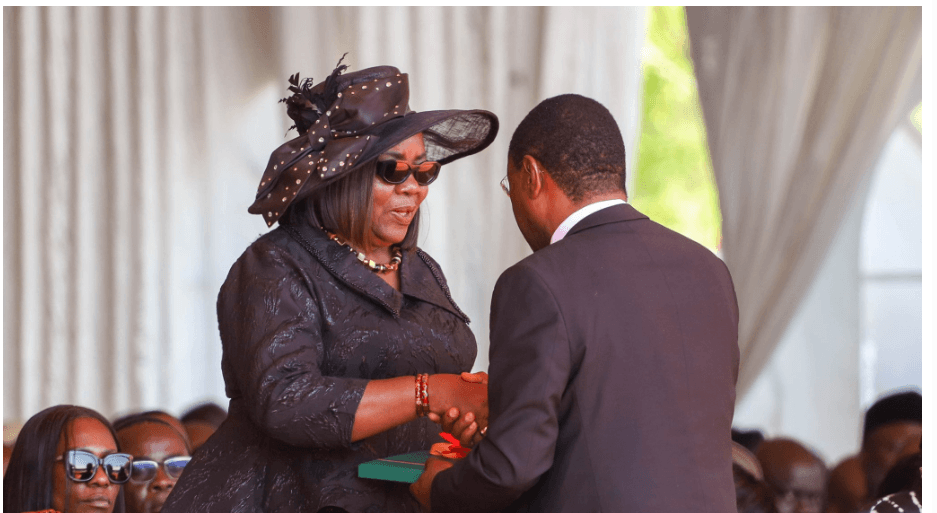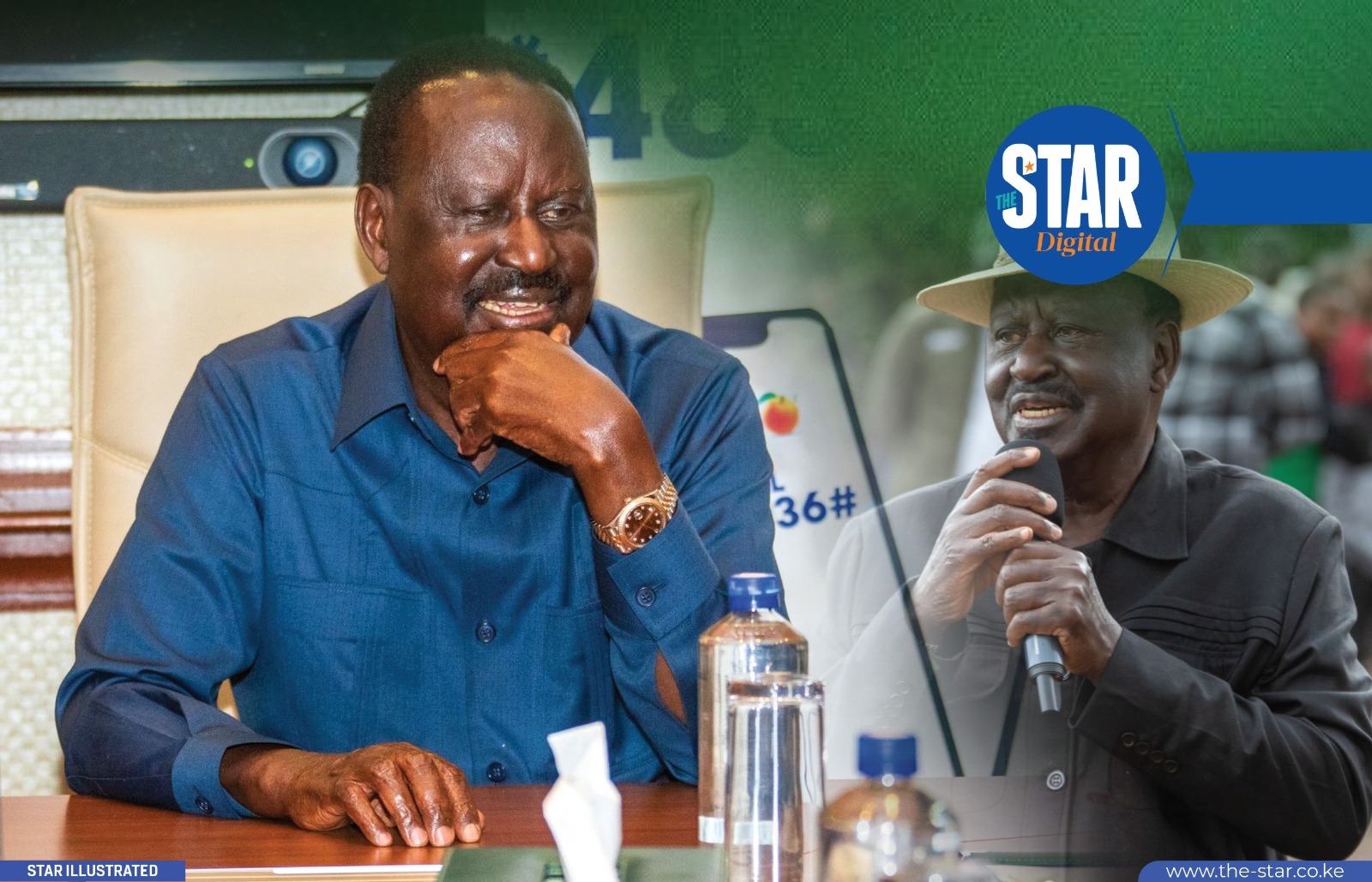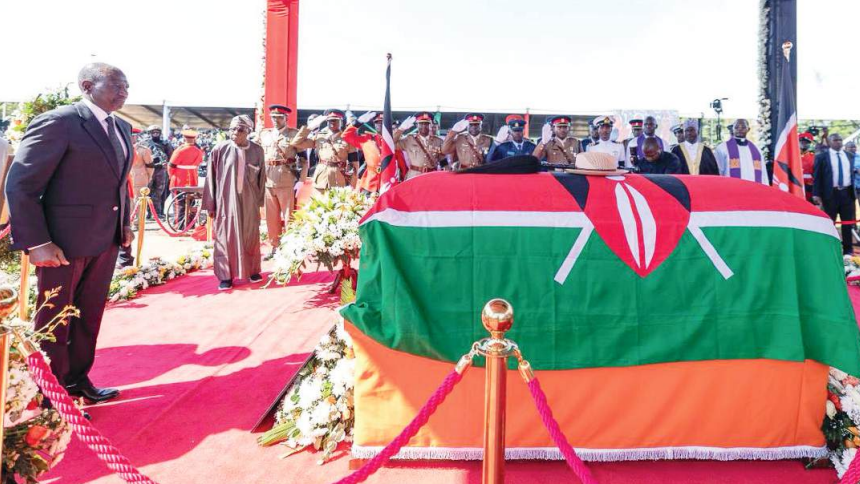
FORGET the 2022 election rivalries that eventually thawed into creation of the broad-based government. The bitter fight between Raila Odinga and President William Ruto dates back to their Kanu days and boiled over to Raila's elevation to party secretary general.
According to the late former Prime Minister’s recollection in his autobiography Raila Odinga: Flames of Freedom with Sarah Elderkin, Ruto was detailed by then president Daniel Moi to checkmate him even though he had just been minted as secretary general of the independence party after he dissolved his own outfit NDP to join it.
Raila had led his party to a merger with Kanu in March 2001 at a ceremony in Kasarani.
Ruto, elected in 1997 as MP for Eldoret North, was a dyed-in-the wool Kanu insider who had led the Youth for Kanu activism in the 1992 elections together with Cyrus Jirongo.
While Moi elevated him to the powerful SG position and appointed him Minister for Energy, the President was also working in shadows to monitor him and ensure he was cornered, if not cut down to size.
So serious was the scheme that even before he visited the office at Kanu headquarters at KICC for the first time, Moi had Ruto go there and instruct the team that despite Raila’s installation, it was Ruto and Uhuru Kenyatta who would pull the strings.
He “was determined to sweep clean, and I made for the Kanu headquarters at the KICC in Nairobi as soon as I left the Kasarani meeting - just to have a look.”
He wanted the handover from JJ Kamotho to be orderly and civil and arranged to meet the following day.
"When I arrived the next morning, he took me round the offices and formally handed over.
“I had not long settled down to my new task when the then Kanu executive director Peter Gachumbi, who had been sent to Russia by Jaramogi to learn the art of party organisation, came in and told me that the Kanu headquarters had had another visitor prior to my own arrival. That visitor was Eldoret North MP William Ruto, one of Moi’s favourite acolytes.”
Determined to keep Raila under tight control, Ruto “had visited and, evidently unaware of Gichumbi’s and my close and historical connection, and instructed Gichumbi on who would have which offices at the headquarters.
A large office for Ruto’s own use would be made by knocking through two adjacent offices. "He also made it clear to Gichumbi that, regardless of my election, he and Uhuru Kenyatta would be the real masters at Kanu headquarters,” the book says.
“Gichumbi’s loyaties lay elsewhere and, from that day on, he kept me permanently updated on the activities of Messrs Ruto and Kenyatta.”
At the time of his ascension to the Kanu secretariat, Raila was already a solid heavyweight who had given Moi a run for his money in 1997 elections and whose ambition and disruptive style was well documented.
At this time, Moi had already conceived of the idea of installing Uhuru as his preferred successor and Ruto was the trusted informal man to push the agenda.
Raila writes that before long, Ruto and a clique of other leaders would address meetings in parts of Central Kenya and Rift Valley to promote the Uhuru candidacy. But Uhuru lost to Mwai Kibaki in the 2002 election.
Ruto and Raila would team up in 2005 in the orange-banana campaign that eventually culminated in the creation of ODM party in 2007 presidential election many believe Raila won.
Instant analysis
Raila and Ruto's rivalry is deeply rooted in Kanu-era political intrigues, where Ruto was Moi’s point man to undercut Raila's rising influence. Their uneasy alliance in later years masked a long history of mistrust and power struggles.



